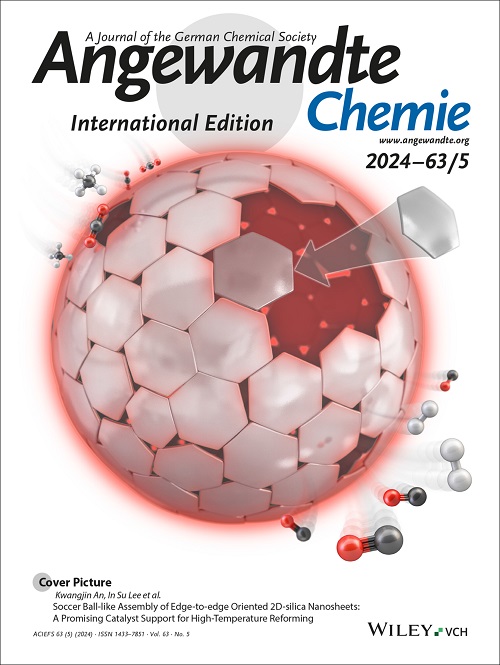用百万分之一(ppm)浓度的三氧化钼催化聚合n掺杂聚苯二呋喃二酮(n - PBDF)
IF 16.9
1区 化学
Q1 CHEMISTRY, MULTIDISCIPLINARY
引用次数: 0
摘要
最近发现的高导电性,可溶液加工,n掺杂的聚(苯二呋喃二酮)(n - PBDF)显著地推动了有机电子学的边界。然而,为了最大限度地发挥其实际影响,一种可扩展且具有成本效益的合成方法是必不可少的。最初,n - PBDF是通过duroquinone介导或铜催化聚合合成的,但这些方法需要长时间的透析,限制了它们的可扩展性。我们最近的SeO 2催化聚合提高了效率,但仍然需要离心和过滤来去除固体硒副产物。在这项工作中,我们引入了一种高效的三氧化钼(MoO₃)催化n - PBDF聚合。值得注意的是,MoO₃在百万分之一(ppm)浓度下实现了近定量的单体转化(通过NMR达到99%),消除了纯化的需要。动力学研究表明,这种聚合遵循链式生长机制,可以合成具有可控粒径和嵌段共聚物的高质量n - PBDF聚合物。机理研究表明,MoO₃介导了一个涉及二甲基亚砜(DMSO)的氧化途径,其中二甲硫醚(DMS)被确定为还原产物。这一突破不仅为高质量的n - PBDF提供了一条可扩展、低成本的途径,而且还开辟了新的合成机会,大大扩展了功能聚合物的合成工具箱。本文章由计算机程序翻译,如有差异,请以英文原文为准。
Catalytic Polymerization of n‐Doped Poly(benzodifurandione) (n‐PBDF) Using Parts Per Million (ppm) Level of Molybdenum Trioxide
The recent discovery of highly conductive, solution‐processable, n‐doped poly(benzodifurandione) (n‐PBDF) has significantly pushed the boundaries of organic electronics. However, to maximize its practical impact, a scalable and cost‐effective synthetic method is essential. Initially, n‐PBDF was synthesized via duroquinone‐mediated or copper‐catalyzed polymerizations, but these methods required prolonged dialysis, limiting their scalability. Our recent SeO₂‐catalyzed polymerization improved efficiency but still necessitated centrifugation and filtration to remove solid selenium byproducts. In this work, we introduce a highly efficient molybdenum trioxide (MoO₃)‐catalyzed polymerization of n‐PBDF. Remarkably, MoO₃ at parts‐per‐million (ppm) concentrations achieves near‐quantitative monomer conversion (>99% by NMR), eliminating the need for purification. Kinetic studies demonstrate that this polymerization follows a chain‐growth mechanism, enabling the synthesis of high‐quality n‐PBDF polymers with controlled particle sizes and block copolymers. Mechanistic investigations reveal that MoO₃ mediates an oxidative pathway involving dimethyl sulfoxide (DMSO), with dimethyl sulfide (DMS) identified as the reduction product. This breakthrough not only provides a scalable, low‐cost route to high‐quality n‐PBDF but also unlocks new synthetic opportunities, significantly expanding the synthetic toolbox for functional polymers.
求助全文
通过发布文献求助,成功后即可免费获取论文全文。
去求助
来源期刊
CiteScore
26.60
自引率
6.60%
发文量
3549
审稿时长
1.5 months
期刊介绍:
Angewandte Chemie, a journal of the German Chemical Society (GDCh), maintains a leading position among scholarly journals in general chemistry with an impressive Impact Factor of 16.6 (2022 Journal Citation Reports, Clarivate, 2023). Published weekly in a reader-friendly format, it features new articles almost every day. Established in 1887, Angewandte Chemie is a prominent chemistry journal, offering a dynamic blend of Review-type articles, Highlights, Communications, and Research Articles on a weekly basis, making it unique in the field.

 求助内容:
求助内容: 应助结果提醒方式:
应助结果提醒方式:


